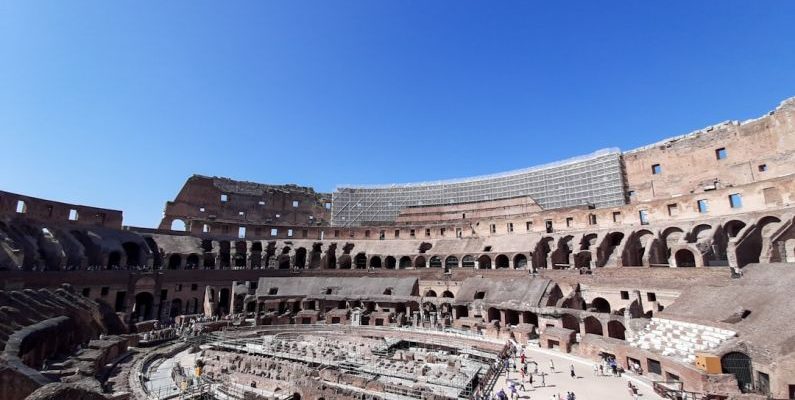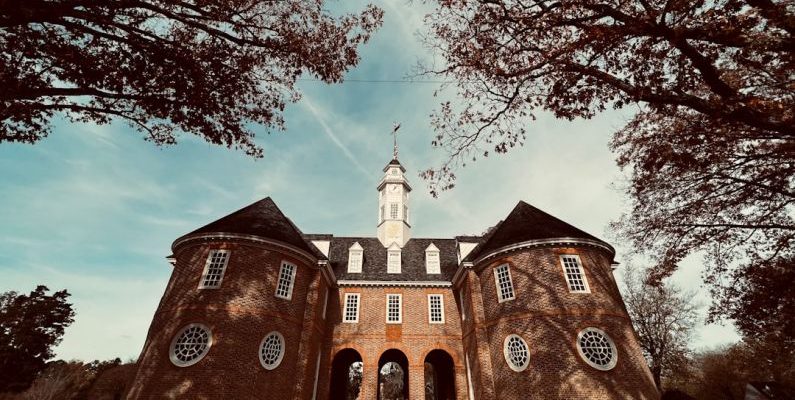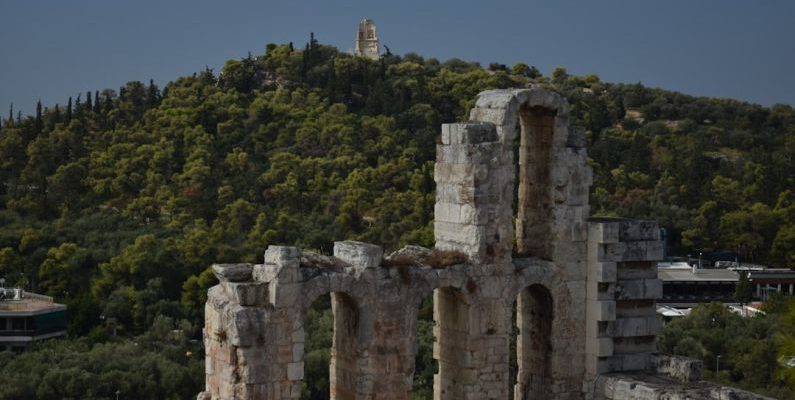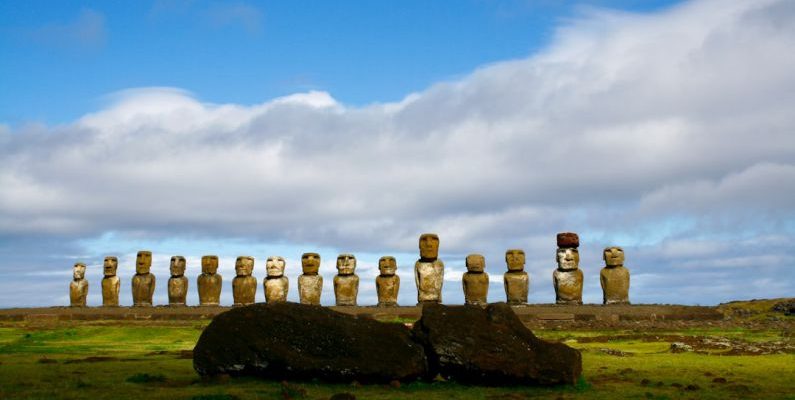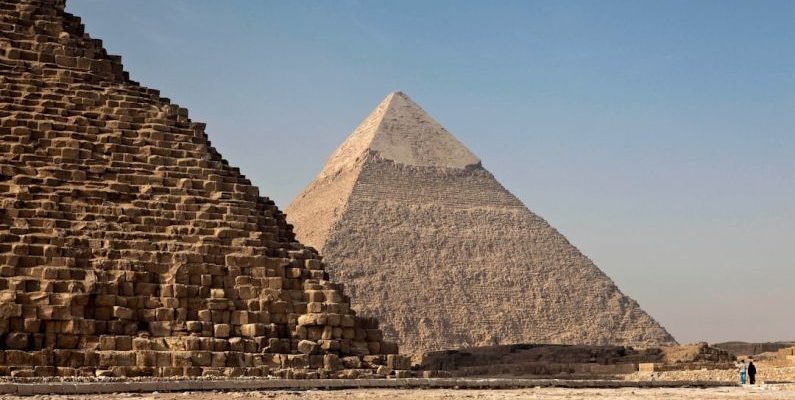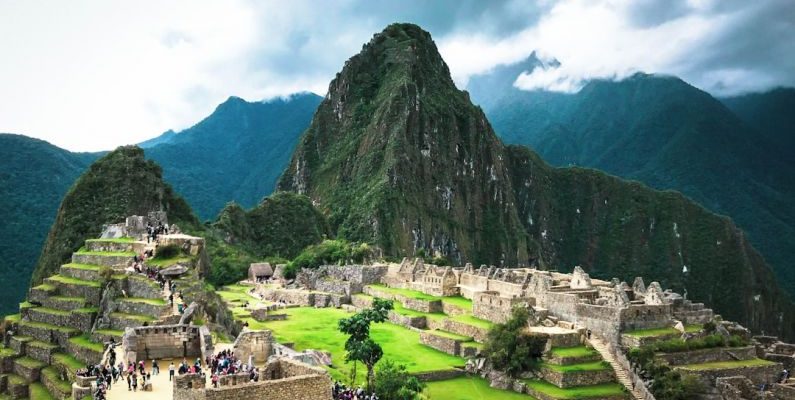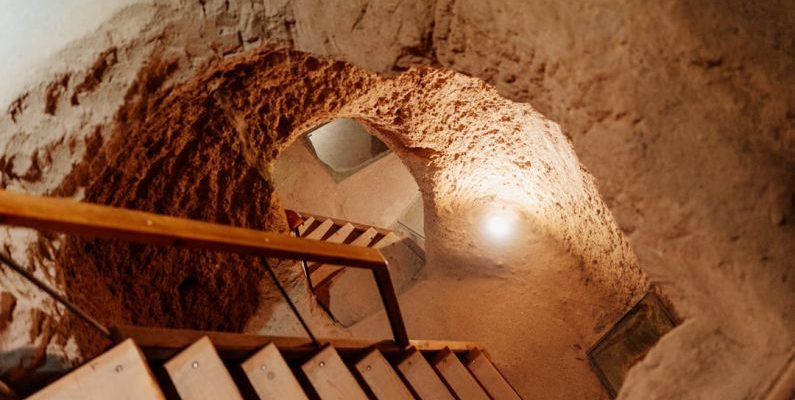Nestled in the heart of Rome, the Colosseum stands as a magnificent symbol of the ancient world. This iconic amphitheater, also known as the Flavian Amphitheatre, has captivated visitors for centuries with its grandeur and historical significance. Stepping inside its walls is like taking a step back in time, offering a glimpse into the lives of the Romans who once gathered here for entertainment and spectacle. Let's explore the rich history and architectural marvels of the Colosseum.
Historical Destinations
Nestled in the heart of Virginia lies a place where the past comes alive, where visitors can step back in time and experience the sights, sounds, and smells of 18th-century America. Colonial Williamsburg is a living history museum that transports guests to the colonial capital of Virginia, offering a glimpse into the daily lives of the early American settlers. From historic buildings and reenactments to interactive exhibits and hands-on activities, this immersive experience provides a unique opportunity to connect with the country's rich heritage.
Exploring Historic Buildings
Wandering the cobblestone streets of Colonial Williamsburg, visitors are surrounded by meticulously restored buildings that transport them to a bygone era. Each structure tells a story, from the grand Governor's Palace to the humble tradesmen's shops. Stepping through the doorways, guests are greeted by costumed interpreters who bring the past to life with tales of daily life, politics, and revolution. The attention to detail is remarkable, with period furnishings, artifacts, and decor that recreate the atmosphere of colonial America.Meeting Historical Figures
One of the highlights of a visit to Colonial Williamsburg is the chance to interact with historical figures who shaped the course of American history. From Thomas Jefferson to Patrick Henry, these costumed interpreters embody the spirit of the era, engaging visitors in conversation and debate. Whether discussing politics in the Capitol building or sharing stories at the tavern, these encounters provide a personal connection to the past that is both educational and entertaining.Participating in Hands-On Activities
For those looking to fully immerse themselves in the colonial experience, Colonial Williamsburg offers a range of hands-on activities that allow visitors to try their hand at traditional crafts and trades. From blacksmithing and carpentry to pottery and weaving, these interactive workshops provide a glimpse into the skills and techniques of 18th-century artisans. Visitors can also participate in historical games, cooking demonstrations, and other activities that offer a deeper understanding of life in colonial America.Attending Reenactments and Events
Throughout the year, Colonial Williamsburg hosts a variety of reenactments and events that bring history to life in dynamic and engaging ways. From military drills and court proceedings to theatrical performances and musical concerts, there is always something happening in the historic district. Visitors can witness the daily routines of the townspeople, experience the drama of the Revolutionary War, and celebrate holidays and special occasions as they would have been observed in the 1700s.Exploring the Surrounding Area
In addition to the attractions within Colonial Williamsburg, visitors can explore the surrounding area to discover even more historical sites and landmarks. Nearby Jamestown, the first permanent English settlement in America, offers a glimpse into the earliest days of the colony, while Yorktown, the site of the decisive battle of the Revolutionary War, provides insight into the end of British rule in America. With so much to see and do, a visit to Colonial Williamsburg is just the beginning of a journey through America's past.Reveling in the Timeless Charm
As the sun sets over Colonial Williamsburg, the historic district takes on a magical glow, with lantern-lit streets and the sound of fife and drum filling the air. Strolling through the town at dusk, visitors can't help but feel transported to another time, where the struggles and triumphs of the past are palpable. Whether enjoying a traditional meal at a historic tavern, shopping for souvenirs at the market, or simply taking in the beauty of the architecture, the timeless charm of Colonial Williamsburg leaves a lasting impression on all who visit.Embracing the Past and Looking to the Future
Colonial Williamsburg is more than just a tourist destination; it is a living tribute to America's history and heritage. By preserving and sharing the stories of the past, this living history museum inspires visitors to connect with their roots and appreciate the sacrifices and achievements of those who came before. As we step back in time in Colonial Williamsburg, we are reminded of the enduring legacy of our nation and the importance of preserving our cultural heritage for future generations to experience and enjoy.
Kyoto, a city steeped in history and tradition, is a treasure trove of ancient streets that offer a glimpse into Japan's rich cultural past. Walking through the historic streets of Kyoto is like stepping back in time, where each cobblestone and wooden structure whispers stories of bygone eras. From bustling market alleys to serene temple pathways, every corner of Kyoto holds a piece of its illustrious history waiting to be discovered.
Exploring Gion: The Geisha District
One of the most iconic districts in Kyoto is Gion, known for its preserved machiya houses and traditional tea houses. Walking through the narrow streets of Gion, you can catch a glimpse of geishas hurrying to their appointments, adding a touch of elegance and mystique to the surroundings. The wooden facades of the machiya houses exude an old-world charm, transporting you to a time when Kyoto was the cultural heart of Japan. Don't miss the chance to visit Hanami-koji Street, lined with upscale restaurants and ochaya (teahouses) where geisha performances take place.Nishiki Market: A Culinary Adventure
For a sensory feast, head to Nishiki Market, a bustling arcade filled with vendors selling everything from fresh seafood to traditional sweets. As you stroll through the narrow alleyways, the aroma of grilled fish and simmering broths fills the air, enticing you to sample local delicacies. Indulge in a variety of street food offerings, from skewered yakitori to matcha-flavored treats, and experience the vibrant culinary scene that has thrived in Kyoto for centuries. Nishiki Market is a must-visit destination for food enthusiasts looking to taste the flavors of Kyoto.Arashiyama Bamboo Grove: Nature's Symphony
Escape the urban hustle and bustle by venturing to the Arashiyama Bamboo Grove, a tranquil sanctuary where towering bamboo stalks create a natural canopy overhead. The rhythmic rustling of the bamboo leaves in the wind provides a serene backdrop for a leisurely stroll through this enchanting forest. As you meander along the winding pathways, you'll feel a sense of peace and harmony enveloping you, making it easy to understand why the bamboo grove has long been a source of inspiration for artists and poets alike.Kiyomizu-dera Temple: A Spiritual Journey
Perched atop a hill overlooking Kyoto, Kiyomizu-dera Temple is a testament to the enduring spiritual legacy of the city. The main hall, with its expansive veranda offering panoramic views of the surrounding landscape, is a prime spot to reflect and contemplate the beauty of the temple complex. As you explore the temple grounds, you'll encounter various pagodas, shrines, and gardens that reflect the intricate craftsmanship and devotion of the artisans who built them. Kiyomizu-dera Temple is a place of serenity and reverence, inviting visitors to connect with their inner selves amidst the ancient surroundings.Fushimi Inari Taisha: Gates to Infinity
No visit to Kyoto is complete without a trip to Fushimi Inari Taisha, home to thousands of vermillion torii gates that form a mesmerizing tunnel leading up the sacred Mount Inari. Walking through the tunnels of torii gates, you'll feel a sense of awe and wonder at the sheer scale of this spiritual pathway. Each gate is inscribed with the name of its donor, symbolizing a wish or prayer offered to the Shinto deity Inari. The hike to the mountaintop offers panoramic views of Kyoto and a chance to immerse yourself in the mystical ambiance of Fushimi Inari Taisha.Embracing the Past: Kyoto's Timeless Charm
Kyoto's historic streets are not just remnants of a bygone era but living testaments to the enduring legacy of Japan's cultural heritage. Every step you take in Kyoto brings you closer to the essence of Japanese tradition and craftsmanship, embodied in the meticulous design of its temples, gardens, and streets. By walking through the historic streets of Kyoto, you embark on a journey through time, where the past seamlessly merges with the present, creating a tapestry of experiences that leave a lasting impression on your soul. Kyoto beckons you to wander its historic streets, inviting you to unravel the mysteries and treasures hidden within its ancient alleyways and temples.
Perched high above the bustling city of Athens, the Acropolis stands as a symbol of the grandeur and legacy of ancient Greece. This iconic hilltop citadel, crowned by the magnificent Parthenon, continues to captivate visitors from around the world with its profound historical significance and architectural splendor.
**A Timeless Symbol of Power and Prestige**
The Acropolis of Athens, dating back to the 5th century BC, served as the epicenter of the city-state's cultural, political, and religious life. Positioned strategically above the city, this sacred site housed various temples dedicated to the worship of the gods, including the renowned Temple of Athena, the patron goddess of Athens. The construction of the Parthenon, a temple dedicated to Athena Parthenos (Athena the Virgin), marked a pinnacle of ancient Greek architecture and engineering, showcasing the sophistication and artistic prowess of the Athenian civilization.
**Architectural Marvels of the Acropolis**
The Acropolis is a treasure trove of architectural marvels, with each structure bearing testament to the ingenuity and craftsmanship of ancient Greek artisans. The Parthenon, with its Doric columns and intricate friezes depicting mythological scenes, remains a masterpiece of classical architecture. The Erechtheion, another significant temple on the Acropolis, is distinguished by its elegant Ionic columns and the iconic Porch of the Maidens, featuring six draped female figures serving as columns.
**A Cultural Epicenter**
Beyond its architectural splendor, the Acropolis served as a hub of cultural and intellectual activity in ancient Greece. It was here that renowned philosophers such as Socrates, Plato, and Aristotle engaged in philosophical discourse, shaping the foundations of Western thought and inquiry. The Theater of Dionysus, located at the base of the Acropolis, hosted dramatic performances and festivals celebrating the arts, highlighting the Athenians' deep appreciation for drama and storytelling.
**An Enduring Legacy**
Despite centuries of tumultuous history and the ravages of time, the Acropolis has stood resilient, bearing witness to the rise and fall of civilizations. From the Roman occupation to the Byzantine era and beyond, this enduring monument has remained a symbol of Greek identity and cultural heritage. Its significance transcends borders and time, resonating with people across generations as a beacon of ancient wisdom and artistic achievement.
**Preservation and Restoration Efforts**
In recent years, concerted efforts have been made to preserve and restore the Acropolis, ensuring that future generations can continue to marvel at its grandeur. The Acropolis Museum, located nearby, showcases artifacts and sculptures discovered on the site, offering visitors a deeper insight into the rich history and significance of this ancient citadel. Modern conservation techniques and technology have been employed to safeguard the structural integrity of the monuments, allowing visitors to experience the Acropolis in all its glory.
**Embracing the Past, Inspiring the Future**
As we gaze upon the majestic ruins of the Acropolis, we are reminded of the enduring legacy of ancient Greece and the profound impact of its civilization on the course of human history. The Acropolis stands not only as a testament to the architectural genius of the past but also as a source of inspiration for future generations, urging us to uphold the values of democracy, philosophy, and artistic expression that defined the golden age of Athens.
**In Conclusion**
The Acropolis of Athens remains a beacon of ancient Greece, a timeless symbol of power, prestige, and cultural achievement. Its towering monuments and rich history continue to inspire awe and admiration, inviting visitors to embark on a journey through the annals of classical civilization. As we stand in the shadow of the Parthenon, we are reminded of the enduring legacy of the Acropolis, a testament to the resilience and creativity of the human spirit.
With over 2,000 ancient temples scattered across the enchanting plains of Bagan, Myanmar, this archaeological wonder is a testament to the rich cultural heritage and architectural brilliance of the region. The ancient temples of Bagan offer visitors a glimpse into a bygone era, where spirituality and artistic expression converged to create a landscape unlike any other. Let us delve into the mystical world of Bagan's temples and uncover the secrets that lie within.
**Unraveling the Mystique of Bagan**
As you traverse the dusty pathways that wind their way through the temple-strewn landscape of Bagan, you cannot help but be struck by the sheer magnitude of this ancient city. The temples, dating back to between the 9th and 13th centuries, stand as silent sentinels, bearing witness to the passage of time and the ever-changing tides of history.
Each temple in Bagan tells a unique story, reflecting the religious beliefs, artistic sensibilities, and cultural influences of the era in which it was built. From the grandeur of the Ananda Temple to the intricate carvings of the Dhammayangyi Temple, every structure in Bagan holds a treasure trove of architectural and historical significance waiting to be discovered.
**A Glimpse into the Past**
One of the most fascinating aspects of the temples of Bagan is the seamless blend of architectural styles that can be observed throughout the site. Influences from Indian, Mon, and Burmese traditions converge to create a harmonious tapestry of design, with each temple bearing the hallmarks of its cultural heritage.
The temples themselves vary in size and complexity, ranging from small, unassuming shrines to towering structures that seem to reach towards the heavens. Some temples are adorned with intricate stucco carvings, while others boast elaborate frescoes depicting scenes from Buddhist mythology. The diversity of architectural styles and artistic motifs found in Bagan is a testament to the cosmopolitan nature of the city during its heyday.
**The Spiritual Heart of Bagan**
At the core of Bagan's temple complex lies a deep sense of spirituality that permeates every stone and brick. The temples were not merely places of worship but also served as centers of learning, meditation, and artistic expression. Monks and scholars flocked to Bagan to study Buddhist scriptures, while artisans and craftsmen labored to create exquisite works of art that adorned the temples' walls and ceilings.
Today, the spiritual legacy of Bagan lives on, as visitors from around the world come to pay homage to this ancient site and experience the tranquility and serenity that pervades the landscape. Watching the sunrise or sunset over the temple-studded plains of Bagan is a truly magical experience that leaves a lasting impression on all who are fortunate enough to witness it.
**Preserving the Past for Future Generations**
Despite the passage of time and the ravages of nature, the temples of Bagan have managed to withstand the test of time, thanks in part to ongoing preservation efforts aimed at safeguarding these architectural marvels for future generations. Organizations such as the Bagan Archaeological Zone have worked tirelessly to ensure that these ancient temples continue to inspire awe and wonder for years to come.
By exploring the ancient temples of Bagan, visitors not only gain a deeper appreciation for the artistry and craftsmanship of the past but also forge a connection to a bygone era that continues to resonate in the present. The temples of Bagan stand as a testament to the enduring legacy of Myanmar's rich cultural heritage and serve as a reminder of the beauty and complexity of human creativity.
Easter Island, a remote speck in the vast Pacific Ocean, is home to one of the world's most enigmatic and awe-inspiring sights—the Moai statues. These colossal stone figures, with their enigmatic expressions and imposing presence, have captivated travelers and researchers for centuries. Gazing upon the Moai statues of Easter Island is a profound experience that evokes a sense of wonder and mystery.
The Mystique of the Moai
The Moai statues are the defining feature of Easter Island, also known as Rapa Nui. Carved by the Rapa Nui people between the 13th and 16th centuries, these monolithic figures stand guard over the island, watching over the land with an air of quiet authority. The mystery surrounding the Moai lies not only in their sheer size and number but also in the unanswered questions about their creation and purpose. Each Moai is a unique work of art, with distinct facial features and expressions. Some have intricate carvings on their backs, representing tattoos or other symbolic elements. The statues vary in height, with the tallest reaching over 30 feet, while others are smaller and more modest in scale. Despite their differences, all the Moai share a sense of solemnity and dignity that is both haunting and captivating.The Riddle of the Moai
One of the most enduring mysteries of the Moai statues is how the Rapa Nui people managed to carve and transport these massive figures across the island. The statues were carved from volcanic tuff, a relatively soft rock found in the quarries of Rano Raraku, the main quarry site on Easter Island. Scholars believe that the Rapa Nui used stone tools and a combination of techniques, including levering, to carve the statues and move them to their final resting places. The process of transporting the Moai, some of which weigh up to 80 tons, is a subject of ongoing debate among researchers. Some theories suggest that the statues were rolled on logs, while others propose that they were moved upright using a system of ropes and manpower. The exact method remains uncertain, adding to the mystique and allure of the Moai statues.The Legacy of the Moai
Despite the passage of centuries, the Moai statues continue to fascinate and inspire visitors to Easter Island. These silent sentinels stand as a testament to the ingenuity and artistry of the Rapa Nui people, who created these magnificent works of art with limited resources and tools. The Moai also serve as a reminder of the fragility of human civilization and the impact of environmental degradation on a once-thriving culture. Visitors to Easter Island are drawn to the Moai not only for their aesthetic beauty but also for the sense of wonder and reverence they inspire. Gazing upon these ancient statues, set against the backdrop of the island's rugged landscape and turquoise waters, is a humbling experience that invites reflection on the passage of time and the resilience of the human spirit.The Enigma of the Moai
As the sun sets over Easter Island and the Moai statues cast long shadows across the landscape, the enigma of these ancient figures only deepens. Who were the Rapa Nui people, and what compelled them to create such monumental sculptures? What stories and beliefs are encoded in the faces of the Moai, staring out across the centuries with inscrutable expressions? Gazing upon the Moai statues of Easter Island is more than just a tourist attraction—it is a journey into the heart of a lost civilization, a glimpse into a world where art, spirituality, and the forces of nature converged in a symphony of stone and sky. The Moai stand as a testament to the enduring power of human creativity and the eternal quest for meaning and connection in a vast and mysterious universe.
The Pyramids of Giza have stood as a testament to the ingenuity and grandeur of ancient Egypt for over 4,500 years. These iconic structures, built as tombs for the pharaohs, continue to captivate the imagination of people around the world with their mysterious allure and monumental presence. Let's delve into the history, construction, and significance of these timeless treasures.
**The Great Pyramid of Khufu**
At the heart of the Giza pyramid complex stands the Great Pyramid of Khufu, also known as the Pyramid of Cheops. This awe-inspiring structure is the largest and most famous of the three pyramids, standing at a towering height of 481 feet. Constructed during the reign of Pharaoh Khufu in the 26th century BC, the Great Pyramid was the tallest man-made structure in the world for over 3,800 years.
**Architectural Marvels**
The construction of the pyramids remains a remarkable feat of ancient engineering. The sheer size and precision of these monuments have baffled historians and archaeologists for centuries. Each block of limestone used in the construction of the pyramids weighs several tons, yet the builders managed to fit them together with astonishing accuracy. The alignment of the pyramids with the cardinal points of the compass further demonstrates the advanced knowledge and skill of the ancient Egyptians.
**Mysteries and Theories**
Despite centuries of study, the pyramids continue to be shrouded in mystery. How were these massive structures built without the aid of modern technology? Why were they aligned with such precision? Various theories have been proposed, ranging from the use of ramps and pulleys to more speculative ideas involving extraterrestrial intervention. The true methods employed by the ancient builders remain a subject of debate and fascination.
**Symbolism and Significance**
Beyond their impressive size and construction, the pyramids hold deep symbolic and religious significance for the ancient Egyptians. In Egyptian mythology, the pyramid shape was associated with the sun god Ra and symbolized the primordial mound from which the world was created. The pyramids were believed to serve as vehicles for the pharaoh's soul to ascend to the afterlife and achieve immortality.
**Legacy and Tourism**
Today, the Pyramids of Giza stand as a testament to the enduring legacy of ancient Egypt. Tourists from around the world flock to marvel at these architectural marvels, soaking in the rich history and cultural significance of the site. The pyramids have become an enduring symbol of Egypt and a must-see destination for travelers seeking to connect with the mysteries of the past.
**Preservation and Conservation**
While the pyramids have weathered the sands of time for millennia, they are not immune to the effects of modern development and environmental factors. Conservation efforts are ongoing to preserve these ancient wonders for future generations. The Egyptian government, along with international organizations, works tirelessly to ensure the protection and maintenance of the pyramids, safeguarding them for posterity.
**In Conclusion: A Timeless Legacy**
The Pyramids of Giza stand as a timeless testament to the ingenuity, artistry, and spiritual beliefs of the ancient Egyptians. These monumental structures continue to inspire awe and wonder, inviting us to ponder the mysteries of the past and marvel at the enduring legacy of one of the world's greatest civilizations. As we gaze upon the majestic pyramids, we are reminded of the power of human creativity and the enduring quest for immortality that transcends time and space.
Nestled high in the Andes Mountains of Peru lies the magnificent ancient Incan citadel of Machu Picchu, a UNESCO World Heritage site and one of the New Seven Wonders of the World. This iconic archaeological wonder continues to captivate the hearts and minds of travelers from around the globe, drawing them in with its mystique and grandeur. Exploring the ancient ruins of Machu Picchu is a journey back in time, offering a glimpse into the rich history and advanced engineering prowess of the Inca civilization.
Unveiling the Mysteries of Machu Picchu
As you wander through the sprawling complex of Machu Picchu, you can't help but be awestruck by the sheer scale and ingenuity of the ancient Incan architecture. The precision with which the massive stone blocks were cut and fitted together without the use of mortar is a testament to the exceptional craftsmanship of the Inca people. The impressive terraces, temples, and residential buildings that make up the citadel are a marvel to behold, each structure telling a story of a bygone era.Walking in the Footsteps of the Incas
One of the most remarkable aspects of visiting Machu Picchu is the opportunity to walk in the footsteps of the ancient Incas who once called this place home. The network of stone pathways that crisscross the site leads you through a maze of intricately designed buildings and terraces, offering a glimpse into the daily lives of the Inca inhabitants. As you meander through the narrow alleyways and climb the steep stone staircases, you can't help but feel a sense of reverence for the people who built this extraordinary place with nothing but their hands and simple tools.The Sacred Sun Temple
At the heart of Machu Picchu lies the sacred Sun Temple, a structure that was of utmost importance to the Inca civilization. This carefully constructed building is aligned with the movements of the sun, allowing sunlight to illuminate its interior during the winter solstice. The intricate stonework and celestial alignment of the Sun Temple are a testament to the Inca's deep connection with the natural world and their advanced understanding of astronomy.The Intihuatana Stone
One of the most enigmatic features of Machu Picchu is the Intihuatana Stone, a carved granite rock that served as an astronomical observatory and ritual site for the Inca priests. The name "Intihuatana" translates to "hitching post of the sun," indicating its function in capturing the sun's rays during the solstices. The Intihuatana Stone is believed to have held spiritual significance for the Inca people, serving as a link between the earthly realm and the celestial spheres.The Spectacular Views
In addition to its archaeological wonders, Machu Picchu also offers breathtaking panoramic views of the surrounding Andes Mountains and the winding Urubamba River below. The site's strategic location on a high ridge provides visitors with a sense of being on top of the world, surrounded by the awe-inspiring beauty of the natural landscape. Watching the sunrise over Machu Picchu is a truly magical experience, as the first rays of light illuminate the ancient stones and bring the citadel to life in a golden glow.Unraveling the Mysteries of Machu Picchu
As you explore the ancient ruins of Machu Picchu, you can't help but be drawn into the mysteries and legends that shroud this enigmatic site. From its precise alignment with the sun to the intricate stone carvings that adorn its walls, every aspect of Machu Picchu seems to hold a secret waiting to be discovered. While archaeologists have made great strides in unraveling the history of this remarkable place, there is still much that remains unknown about the true purpose and meaning behind the citadel's construction. In conclusion, exploring the ancient ruins of Machu Picchu is a journey of discovery and wonder, offering visitors a glimpse into the remarkable achievements of the Inca civilization. From the sacred Sun Temple to the mystical Intihuatana Stone, every corner of this extraordinary site tells a story of a bygone era and a people whose legacy continues to fascinate and inspire. As you stand atop the high ridge of Machu Picchu, gazing out at the majestic Andes Mountains, you can't help but feel a sense of awe and reverence for this ancient marvel that has stood the test of time.
Stretching over 13,000 miles through the rugged terrain of northern China, the Great Wall stands as a testament to the ingenuity and perseverance of ancient civilizations. This iconic structure has captured the imagination of people worldwide for centuries, drawing millions of visitors each year to witness its grandeur and learn about its rich history. From its construction to its significance in modern times, the Great Wall of China continues to be a symbol of strength and unity.
A Historical Marvel
The origins of the Great Wall of China date back over 2,000 years, to the time of the first Emperor of China, Qin Shi Huang. The wall was initially built as a series of separate fortifications by various Chinese states to protect against invasions from nomadic tribes to the north. It wasn't until the Qin Dynasty that these individual walls were connected and reinforced, creating the formidable structure we know today. The Great Wall underwent several expansions and renovations over the centuries, with each dynasty adding its own touches and fortifications to strengthen its defenses. The wall's construction involved a massive workforce of soldiers, peasants, and prisoners, who labored tirelessly to build and maintain this colossal barrier.A Symbol of Unity and Protection
Beyond its practical function as a defensive fortification, the Great Wall of China also served as a symbol of unity for the Chinese people. It represented the strength and determination of the nation to protect its borders and preserve its cultural heritage. The wall's sheer scale and complexity reflected the power and resources of the Chinese dynasties that undertook its construction. In addition to its military significance, the Great Wall played a crucial role in facilitating trade and communication along the Silk Road, connecting China to the rest of the world. Merchants, travelers, and diplomats traversed its length, exchanging goods, ideas, and cultures across vast distances.A Modern Marvel
Today, the Great Wall of China stands as one of the most visited and recognizable landmarks in the world. Its historical and cultural significance have earned it a place on the UNESCO World Heritage List, ensuring its preservation for future generations to appreciate and admire. Visitors from around the globe flock to the Great Wall to marvel at its architectural grandeur and breathtaking vistas. Whether hiking along its rugged paths, exploring its ancient watchtowers, or simply gazing out over the vast landscapes it traverses, the Great Wall offers a truly immersive experience that transports visitors back in time.Exploring the Great Wall
For those seeking a more adventurous journey, there are countless opportunities to explore the Great Wall beyond the popular tourist sections. Trekking along remote stretches of the wall, camping overnight in ancient watchtowers, or participating in local cultural activities in nearby villages provide a unique perspective on this iconic monument. As you traverse the Great Wall of China, you can't help but be awed by the sheer scale and complexity of this ancient marvel. Each brick and stone bears witness to centuries of history, embodying the spirit of resilience and unity that defines the Chinese people.In Conclusion
The Great Wall of China stands as a testament to the enduring legacy of one of the world's oldest civilizations. Its monumental presence serves as a reminder of the ingenuity, determination, and unity that have shaped Chinese history and culture for millennia. Whether you are a history enthusiast, an adventure seeker, or simply a curious traveler, a journey along the Great Wall promises an unforgettable experience that transcends time and borders.
Deep beneath the surface of Cappadocia in Turkey lies a hidden marvel that showcases the ingenuity and resilience of ancient civilizations - the underground city of Derinkuyu. Carved out of soft volcanic rock over 2,000 years ago, this subterranean labyrinth is an architectural wonder that offers a glimpse into the daily life and strategic thinking of its inhabitants. Let us delve into the depths of Derinkuyu and uncover the secrets of this fascinating underground city.
